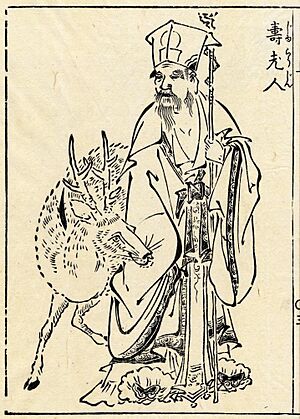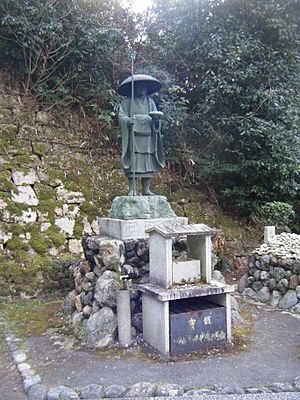Juroujin facts for kids
In Japan, Jurōjin is one of the Seven Gods of Fortune. He is known as the god of longevity, which means a long life. Jurōjin comes from an old Chinese belief system called Taoism. He is linked to a Chinese god known as the Old Man of the South Pole. People believe Jurōjin is the spirit of the Southern Polar Star.
Who is Jurōjin?
Jurōjin is a very important figure in Japanese culture. He is one of the seven gods who bring good luck. His main job is to bless people with long lives. He is thought to have been a real person during the Northern Song dynasty in China (from 960 to 1127).
What Does He Look Like?
Jurōjin is usually shown as a small, old man. He has a very long, white beard and often a tall, bald head. He carries a special staff and a fan. A scroll is tied to his staff. This scroll is said to have the lifespan of all living things written on it. Sometimes, people think the scroll is a Buddhist sutra, which is a religious text.
Jurōjin is often seen with animals that symbolize a long life. The deer is usually his messenger. Other animals like the crane and the tortoise also appear with him. These animals are known for living for a very long time.
Jurōjin in Art
Jurōjin has been a popular subject for Japanese ink wash paintings. These are paintings made with black ink. Zen Buddhist painters first brought Jurōjin into Japanese art. You can find pictures of Jurōjin from the Muromachi period (1337 to 1573) all the way through the Edo period (1603 to 1868).
Images for kids
See also
 In Spanish: Jurōjin para niños
In Spanish: Jurōjin para niños





